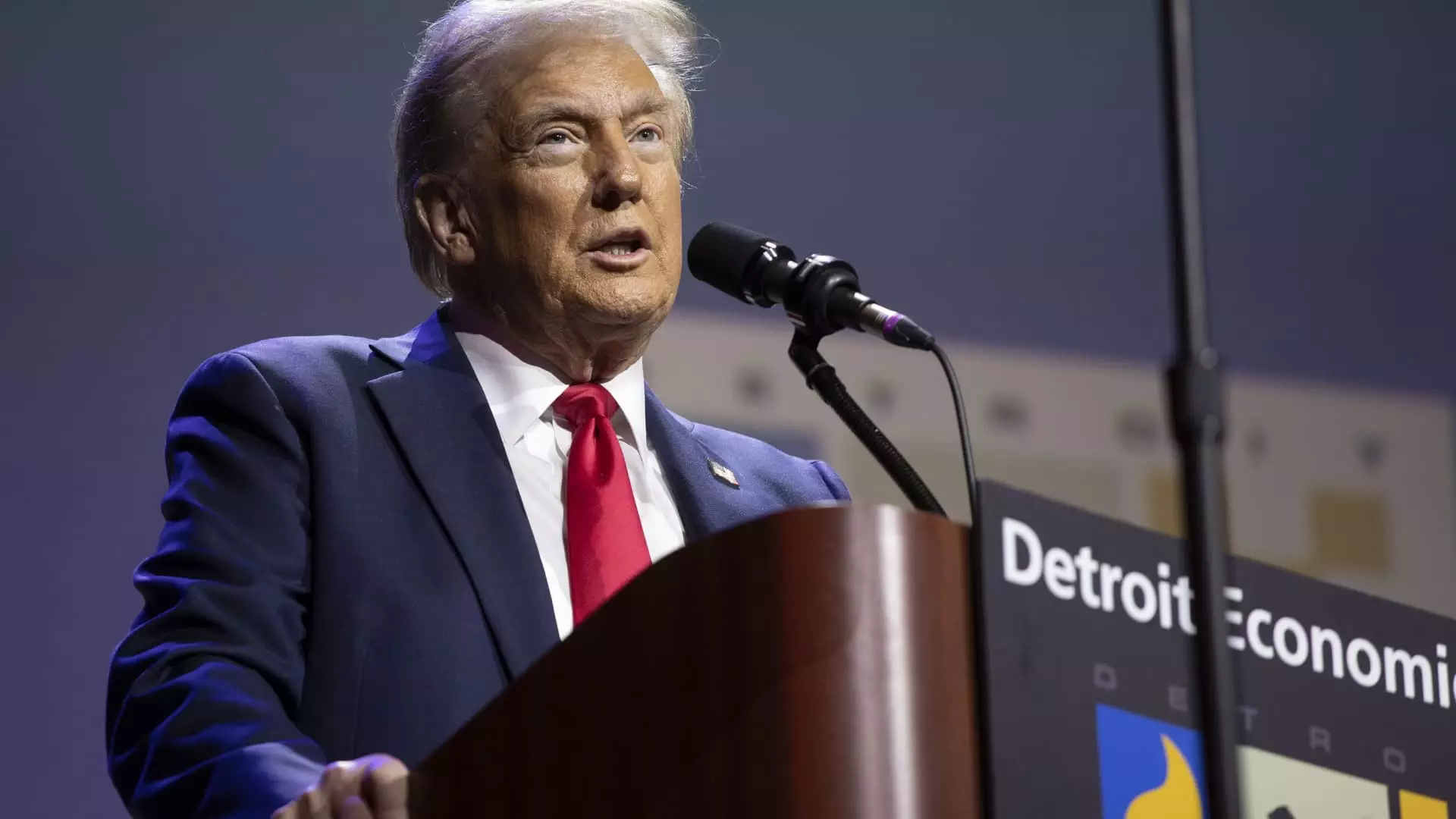The prospect of Donald Trump returning to the presidency in 2024 raises serious questions about economic policies that could reshape the American landscape. His administration’s trade advisor, Robert Lighthizer, has communicated with Wall Street insiders about potential aggressive tariff plans. This article delves into the implications of such strategies, the rhetoric surrounding them, and the broader economic consequences they may entail.
Robert Lighthizer’s recent discussions with investment groups have sparked interest among policy analysts. During these meetings, he purportedly indicated that Trump could implement a staggering 60% tariff on Chinese imports and a blanket 10% tariff shortly after taking office again. While these claims excite potential investors, they also signal a return to protectionist measures that characterized Trump’s first term. Lighthizer, who played a pivotal role in crafting these policies, has emerged as a central figure within Trump’s campaign as he navigates economic policy discussions.
Trump’s campaign spokesperson, Karoline Leavitt, emphasized that no formal policy should be considered unless it is announced by Trump himself, a cautionary statement that hints at the uncertainty surrounding these tariff proposals. The murkiness regarding Lighthizer’s discussions intensifies concerns, as consistent messaging about economic policy from the campaign remains absent.
A considerable body of economic analysis suggests that the vast tariffs proposed by Trump could have adverse effects on the U.S. economy. Economists have launched warnings that such expansive tariff implementations could elevate consumer prices and subsequently curtail GDP growth while impacting employment in critical industries. For example, it has been estimated that families could face a nearly $4,000 tax increase due to these tariffs, as cited by Democratic presidential candidate Kamala Harris.
Ultimately, this complex dynamic showcases the tension between Trump’s vision of a protectionist economy and the core tenets of free trade that underpin much of global commerce today. A robust debate ensues in the economic arena regarding the feasibility of Trump’s tariffs as effective tools for reshoring jobs, especially considering the contradicting views of scholars who warn against their practical implications.
Amid discussions about tariffs, it is crucial to evaluate Trump’s broader economic initiatives. His campaign suggests an ambitious agenda that includes tax cuts, deregulation, and increased domestic energy production. Proponents argue that these measures could create a more favorable environment for business and job growth.
However, historical precedents challenge the efficacy of relying on tariffs as economic panaceas. Trump’s assertion that these tariffs would not burden consumers remains highly contentious. Analysis has indicated that tariffs often lead to higher costs for imported goods, which retailers typically pass on to consumers, exacerbating inflationary pressures rather than alleviating them.
In this context, it’s vital to recognize the significant pushback from experts against a wholesale reliance on tariffs. Critics assert that using tariffs to replace income taxes is impractical; the Peterson Institute for International Economics explicitly denounced this proposition, outlining the economic turmoil that such a shift could result in.
Trump’s affinity for tariffs is indicative of a broader strategic landscape wherein they are perceived as tools for negotiating leverage in international trade relations. He has positioned tariffs as not only economic instruments but also as geopolitical strategies, intending to deter foreign competition, especially from countries like China.
In various speeches, Trump has touted the idea of levying extreme tariffs, sometimes evoking figures like 1,000% on imports from countries that engage in what he views as unfair trade practices. This approach to tariffs reflects a binary viewpoint of international trade: allies versus adversaries, framed within a context of national economic security, which resonates with a segment of the electorate.
While Trump’s proposals may inspire support in certain circles, they must be critically examined within the broader implications they hold for U.S. trade relationships, consumer prices, and the overall economy. His assertion that he will shield American jobs fundamentally contrasts with the consensus of economists who argue for the benefits of free trade.
As Trump embarks on his campaign trail, these tariff discussions will undoubtedly remain at the forefront of economic discourse. The potential for rapid implementation and significant escalation in trade policies under a second Trump presidency poses both risks and uncertainties. Policymakers, economists, and consumers alike must remain vigilant, as tangible outcomes from such fierce economic strategies will impact everyday Americans.
The dialogues surrounding tariffs, particularly as relayed by Lighthizer and the Trump campaign, illuminate the complexities intertwined with the American economy. Understanding these developments in the context of both historical and contemporary economic thinking will be crucial for navigating the potential repercussions of these protective measures.

Leave a Reply